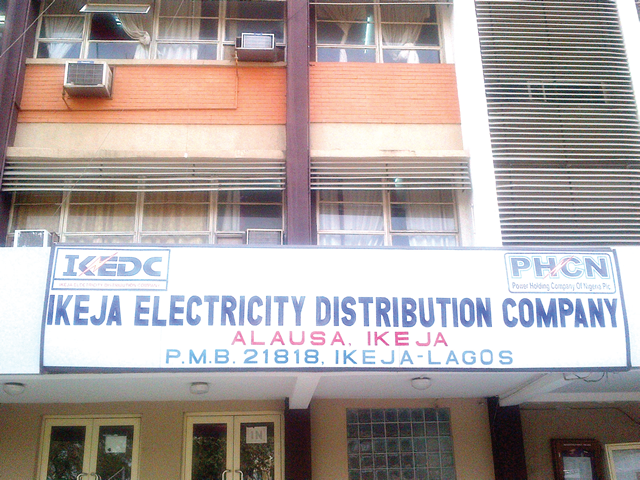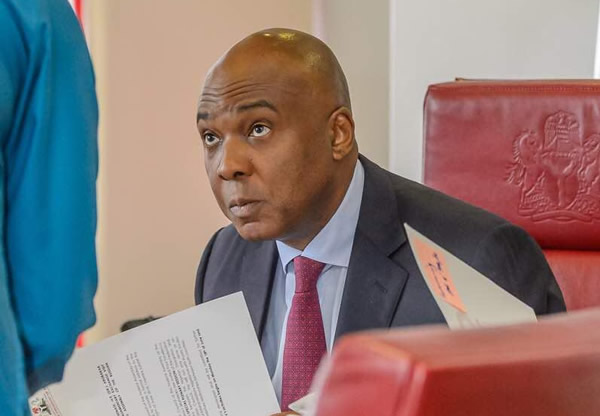They exist in every entity where deliberate planning and management of resources for the good of all stakeholders is key. They are found in every legal enterprise that holds dearly to the ideals of corporate governance, due diligence and attainment of strategic task and targets across operational value chain.
Yes, it is a given that in such establishments, somebody must literarily and practically wear the corporate thinking cap and must have the aptitude, as always, to churn out concrete ingredients and strategies to enable the translation of the vision and mission of the corporation into actionable budget plans.
That official must also be equipped with the capacity to engender a workable system that allocates the usually scarce resources into programmes that seek to achieve the long term strategic goals of the organization in a profitable, cost effective and efficient manner.
And so, in NNPC, arguably Africa’s biggest oil and gas entity, the lot to provide the strategic reflexes and clairvoyant planning for the actualization of corporate mission and vision, falls on the shoulders of Bala Maijama’a Wunti.
Advertisement
Well-schooled in the scientific study of elements, atoms, molecules and their properties, reactions and counter reactions, the Ahmadu Bello University trained chemist is carrying on with exceptional demeanor which depicts great mastery of the terrain.
No doubt, the over 25 years exposure to a wide range of both technical and commercial responsibilities in complex contract negotiations, contract management, business/economic modeling, in addition to knowledge of relevant commercial frameworks, have transformed the once strait-laced chemist into a well-rounded oil and gas industry professional.
Welcoming the NNPC Magazine crew to his office at the NNPC Towers, Wunti was calm and did not betray the burden on his shoulders as he took the team through the job description and mandate of the Corporate Planning and Strategy Division under his watch.
Advertisement
According to him, the first step in the pursuit of the Mission and Vision of the corporation commences with the execution of a corporate appraisal of where the corporation stands relative to where it wants to be.
Wunti explained that such corporate appraisal comprises of carrying out a position audit which is basically an internal assessment, typically achieved by carrying out the Strength, Weakness, Opportunities and Threats (SWOT) analysis and comparing it with an external assessment comprising of environmental scanning and competition analysis. The coordination of these set of activities, he explained, are warehoused under the Strategy Department of the CP&S Division.
Going further, he noted that the focus is eventually developed into a business plan which basically comprises of a business model that generates an operation model which determines the organizational design.
He said these three models determined the level of resource allocation in the annual planning and budgeting cycle for implementation.
Advertisement
“While our Strategy Department is in charge of strategy development and business model formulation, our Corporate Planning Department (CPD) is in charge of our planning and budgeting process. Key performance indicators are established to monitor performance and ensure our business plans achieve the desired strategic objectives,’’ he said.
But beyond rhetoric, what indeed is NNPC’s current corporate strategy?, The GGM in response categorized the corporate strategy for the organization into three phases namely: a short term survival phase, a midterm consolidation phase and long-term growth phase respectively.
He said the survival phase was in 2018 where the corporation’sprimary focus was to ensure the corporation stays afloat by keeping its cost well under control below its revenues.
Under this stage we have to seek to resolve protracted legal and commercial stale mates hindering us from taking major investment decisions that have long term growth implications. This includes, resolving Production Sharing Contracts (PSC) arbitrations, Escravos Gas-to-Liquids (EGTL) Project disputes as well as taking Final Investment Decisions (FIDs) on critical upstream projects.
Advertisement
The second phase, he said, involves midterm consolidation phase where the corporation would be seeking to achieve major milestones most of which align with National aspirations as enshrined in the Economic Recovery & Growth Plan (ERGP).
This step, he added, includes achieving 3million barrels per day average oil production, 45bn reserves, Incorporated Joint Venture (IJV) implementation, Seven Critical Gas Development Plan (7CGDP), 5 billion cubic feet per day (bcfd) of gas to domestic and growing NNPC refining capacity to about 650, 000 barrels per day.
Advertisement
In the long term, post, 2021, we see NNPC achieving long term growth by expanding its footprints beyond the shores of the country, becoming a net exporter of products and dominating the west African region,’’ he said.
But what has the CP&S Management done recently to prepare the workforce for the attainment of the above milestones as projected? And beyond that, what key challenges have been resolved under the current regime? A lot the GGM responded.
Advertisement
According to him, change is both an inside-out quest as well as an outside-in process. Part of change management, he argues, requires that we need to change the way we change.
Recognizing this fact, we have adopted a unique change, management process which we have tagged “Organizational Strengthening Programme (OSP)within our CP&S community which seeks to reposition the division to achieve organizational excellence,’’ he said.
Advertisement
Wunti posits that the objective of the OSP is to strengthen and redirect organizational focus at bringing together seven critical arears namely; People, Policy, Processes, Procedures, Performance, Productivity & Profit to work in sync and to enable effective and efficient delivery of the CP&S mandate.
Under the package, the OSP seeks to achieve organizational excellence through motivation and empowerment of important assets—the people and ensuring established policies are effectively and efficiently implemented using documented processes and procedures.
It is expected that this will ultimately result in enhanced productivity that will eventually drive organizational performance and profitability.
However, recognizing the imperative of people as the livewire of an organization in change, the CP&S deliberately made its highly talented staff the epicenter of its change doctrine.
“As you know, NNPC has some of the most talented people that Nigeria labour market can offer. Ordinarily, the talent assets should translate into high productivity and performance of our organization. However, there remains a significant improvement opportunity in the management of the corporation talent pool towards high performance in line with global best practice,’’ he said.
To achieve this, Wunti noted that efforts are being sustained in the areas of provision of opportunity and visibility for staff under consistent coaching and mentoring.
“In CP&S, we have discovered that effective inspiration and robust engagement that challenge the staff can unlock immense passion, potential, energy and effort from the workforce to the workplace. Unless it engages most of its employees and inspires at least a few, no company can consistently generateideas and great performance,’’ the GGM stated.
Under the first ‘P’ of the OSP’s 7P, the CP&S leadership commitment to the workforce is to deliver world class HSE compliant work environment and appropriate working tools, upgrade critical skills’ set as well as provide opportunities for staff to upscale their knowledge for their own growth and development which would in turn rub off on the workplace.
From an initial position of limited and outdated office space, the division optimized and upgraded the workspace to a position where it now has surplus workspace at world-class standards.
But how was the GGM able to navigate the labyrinth of corporate budgeting process and procedures to achieve this remarkable feat?
“We have utilized the Proof of Concept (PoC) approach to implement most of these projects. As I mentioned earlier, we need to change the way we change. The proof of concept approach in carrying out the office remodeling exercise allowed for swifter decision making and which in turn led to overcoming of the typical organizational drag characteristic by large organizations,’’ he explained
He further stated that the implementation of the office remodeling process was carried out using project teams comprising of the staff as managers of the project and leveraging on the inside-out approach of driving change.
Interestingly, Wunti’s strings of verifiable transformational stride are not limited to the corridors of the CP&S Division. Under his watch the division has made significant progress in resolving ongoing PSC arbitration dispute between the corporation and some PSC contractors.
The PSC’s protracted legal dispute has been ragging for over eight years with up to $8bn arbitration claims against NNPC and over $10bn investment stalled.
The division is also closing in on the lingering PSC gas monetization strategy with indications of final stages of formal unveiling of the strategy for both associated and non-associated gas.
“Through the mandate and support of the NNPC top management, we have made significant progress in getting this industry-wide issue resolved, thus having a potential of generating value of over $7.5bn for the NNPC/FGN and unlocking FDI of over $10bn into the country,’’ he said.
Before his current position, Wunti was the General Manager in charge of the Efficiency Department under CP&S. Earlier, he was the Senior Technical Adviser(STA) to the Group Managing Director where he was responsible for the day-to-day operation and administration of the GMD’s office among other duties.
While functioning as STA, Wunti posted a handful of achievements which included; designing of the business model and extensive participation in negotiating the Shareholders Agreement for West Africa LPG Limited—an LPG marketing and trading joint venture for the marketing of portions of NLNG LPG production, formulation of the business model, commercial structure and coordination preparation of business case for the three NNPC LNG Marketing Joint Ventures (MJVs) with potential to increase NNPC revenue by about $100m annually, among other notable achievements.
At various times he was: Head of Marketing Research, Brass LNG Project, Assistant Chief Market Research Officer, Eleme Petrochemicals Company Limited (EPCL), Port Harcourt, among other positions.
A member of several professional associations, he also holds an MBA in Marketing.
Culled from NNPC’s quarterly magazine
Add a comment






